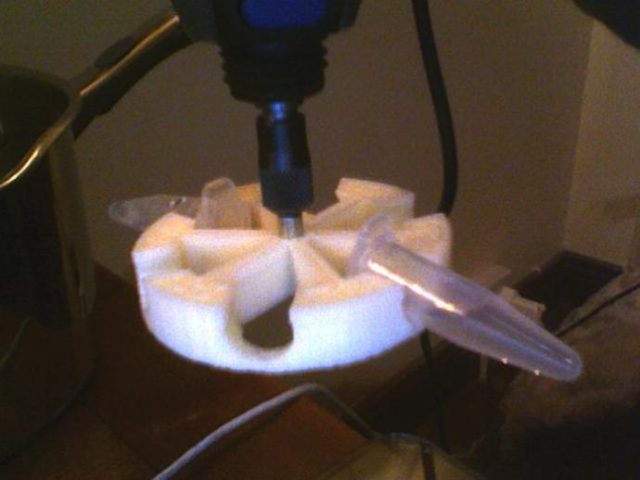
A lot of scientific software is freeware or free/open source software (FOSS). That's appropriate: just as the process of science should be open to enhance reproducibility, its tools should be as transparent as possible. Researchers often share their data and algorithms, and publish the output from their simulations on open-access databases such as Cornell's arXiv. Research hardware—including computer hardware—is another matter entirely. Even small, common pieces of laboratory equipment can be costly, and may not be hackable without (at minimum) violating warranties or terms of use.
Imagine a world where lab workers can create their own custom equipment in-house, using either their own designs or ones they've downloaded. A glimpse of that world appears in today's issue of Science, provided by 3D printing, the relatively low-cost fabrication technique where ceramics, polymers, and other materials are deposited in layers to build up a three-dimensional shape.
With the prices of 3D printers dropping, laboratories at companies and universities have begun using them to build up research equipment. Even better, the printers themselves are often open source—meaning their designs are available and modifiable by end-users—and controlled by FOSS programs. Students in teaching-focused institutions can be involved in the process as well, providing hands-on instruction in design principles.
The initial outlay for a 3D printer is still significant, but when compared to the cost of purchasing a whole lab's worth of equipment, it might be a cost-effective alternative for small schools or colleges. The RepRap printer is an open-source project capable of fabricating some of its own components. Designs can be up or downloaded from repositories like the Thingiverse (I certainly wasted a few fun minutes browsing some of the projects on that site).
A commercial centrifuge for biology labs may cost hundreds or thousands of dollars, but today's issue of Science describes a printed alternative. The DremelFuge is simply a power tool attachment that holds centrifuge tubes. It costs only a little more than the Dremel drill that powers it, once the 3D printer is paid for.
Of course, this won't solve every problem; I can't see inexpensive 3D printers making mass spectrometers in the near future. However, with continuing improvements in technology and lowering costs, we could see more lab equipment being made in-house with open-source hardware—both in the equipment itself and in the machinery used in its fabrication.
Science, 2012. DOI: 10.1126/science.1228183 (About DOIs).
reader comments
42